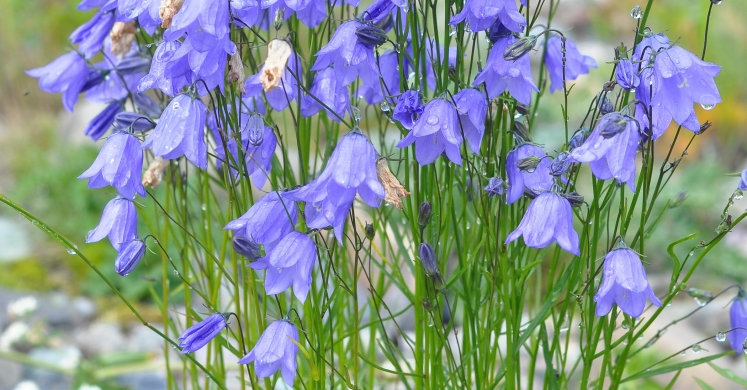Blog

Ask Dr. Phipps: Campanula Query
Q: My campanulas have started dying. First one and then a little later another. Some are still alive, but don’t look good. What is going on?
A: Thank you for contacting Dr. Phipps. I am sorry to hear about your plants.
When we look at a plant problem, we must understand the plant and what is normal for the plant. Then we look to see that we have placed the right plant in the right place. Here is a reference that will give you more information about growing Campanulas.
There are many types of Campanulas and I am not sure which one you have. However, they generally grow in full sun to light shade. They do not like to have wet feet and so prefer well-drained soil. A plant with wet feet will rot at the crown and that leads to the demise of the rest of the plant. All of the summer rain that we received this year may have weakened your plants and they were not able to rebound when the weather turned dry.
As to why one was lost before the other, even a slight difference in location can change the plant environment. I grow Campanulas and have found that even an overhanging tree branch can provide enough shade to affect plant growth. In my yard, one of the plants is much smaller than the others due to the shade. Another issue I found is that some perennial plants are root bound by the time they are for sale in the local nursery. If you plant a root bound plant in the ground, the roots may not ever expand beyond the root ball and you essentially create a bowl in the ground with a plant plopped in the center. With the amazing amount of rain we had this year, it is possible that your plants were spending a lot of time in standing water.
When I purchase a container perennial or shrub or tree, the first thing I do is evaluate the root system. I routinely use a soil knife, sometimes known as a hori hori knife, to trim a good half inch off the circumference of the root ball and the bottom of the root ball. It seems drastic, but it helps the plant send new roots into the soil when planted.
Your plants may not recover at this time. However, I hope that you find this information useful for future endeavors. Keep on planting those annuals, perennials, shrubs, vines, and trees! They improve the environment, provide a lovely hobby, provide food, and bless us with beautiful leaves, flowers and seeds.

